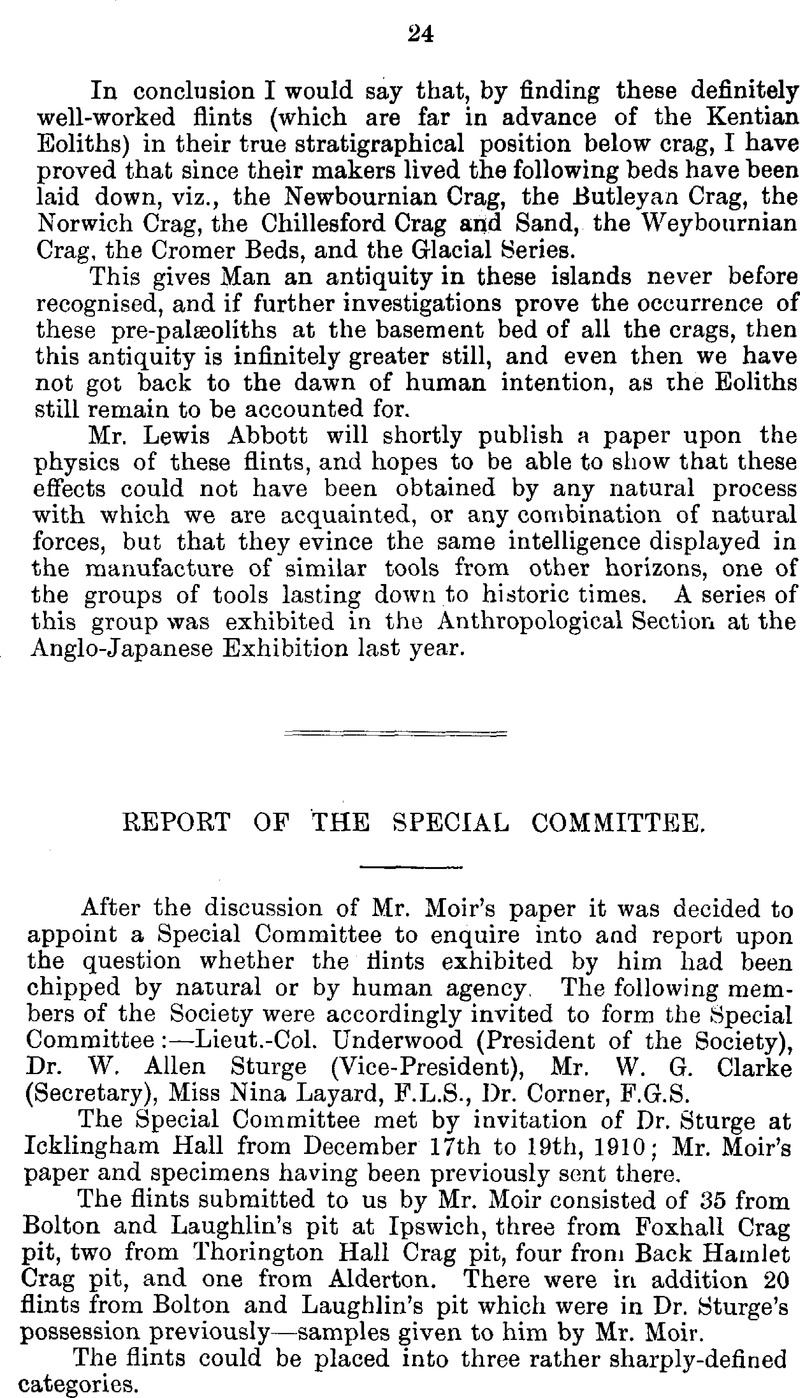Article contents
Report of the Special Committee
Published online by Cambridge University Press: 25 October 2013
Abstract

- Type
- Other
- Information
- Copyright
- Copyright © The Prehistoric Society 1911
References
page 25 note * The word arête is used to indicate the line of junction between contiguous chipped surfaces. “Edge” indicates the “arête latérale” of French archæologists.
page 30 note * The term “alternate chipping” is used to describe secondary edge-chipping on a more or less tabular flint where all the chipping of one edge is taken from one face of the flint, and all the chipping of the other edge from the other face of the flint.
page 33 note * Mr. Moir subsequently discovered another flint in Bolton and Laughlin's pit which was suggestive of the Mousterian period. It was a larger and rougher nodule than the finely-worked flint mentioned above. The chipping was coarser, but it was so suggestive of the period abovementioned that the Members of the Committee, when communicated with, decided that in view of two flints having been found that recalled the appearance of Mousterian “racloirs,” it became necessary to have the whole position again enquired into by geological experts familiar with the district. To this Mr. Moir assented, and by the great kindness of Mr. Whitaker, F.R.S., and Dr. Marr, F.R.S., a meeting was held at Ipswich on March 29th. A report of this meeting is given on page 42.
page 39 note * An asterisk attached to a signature implies that such member of the Committee reserves his or her opinion on the glacial causation of striæ on flint surfaces.
page 39 note † Proceedings of the Norwich Geological Society, Vol. I., Part II. (1878–9), p. 62.
page 42 note * Since this Report went to Press, Professor Bonney has written to say that on further consideration he has come to the conclusion that the Crag deposits in Bolton and Laughlin's pit are not in situ, but owe their present position to later geological disturbances.
- 1
- Cited by


